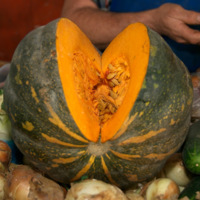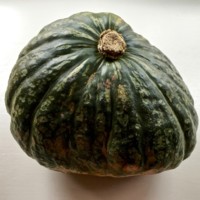Browse Exhibits (2 total)
Good Gourd: Pumpkins In The New World by Patrick Morse

This project traces archaeological and literary records to reveal some of the pumpkin's origins, rooting the cultural record in its proliferation throughout the Americas and West Indies. The research conducted shows the tracing of the Cucurbita or Cucurbitaceae variants across continents, seas, and generations until they are encountered by colonial settlers. Like the Cucurbita, the indigenous people of the continent were subject to generalization and made homogenous despite their cultural nuances. However, if botanists can now decode the development of a gourd through phytology, then the cucurbita can aid the resurrection of indigenous integrity.
This map spans regions of Central/South America and the Caribbean across centuries to illustrate the prominent uses and value of pumpkins and squash, Cucurbita Moschata, leading up to their colonial use as a provision. Archaeological and sociological evidence reveals that the pumpkin was more than a provision; it' ceremonial significance and domestic cultivation was altered when it was discovered among the Amerindians of the new world by European colonizers. Their relegation to a provision crop illustrates a metaphor for the colonial evisceration of native values, culture, and humanity.
Pumpkin (Then & Now) - Dori Clayton

This exhibit seeks to look at pumpkin as an ingredient in Caribbean culture, looking at recipes from the 19th c. and the 21st c. Native to the Caribbean, pumpkins and other squash varieties became a staple in the diet to locals and colonizers alike, eventually becoming a staple ground provision for the enslaved. Before looking at this exhibit, check out Pat's exhibit Good Gourd to learn about the long history of pumpkin in the Caribbean. This pumpkin exhibit will show you what recipes were popular in the past, and what of those recipes are still a staple in Jamaican culture today.